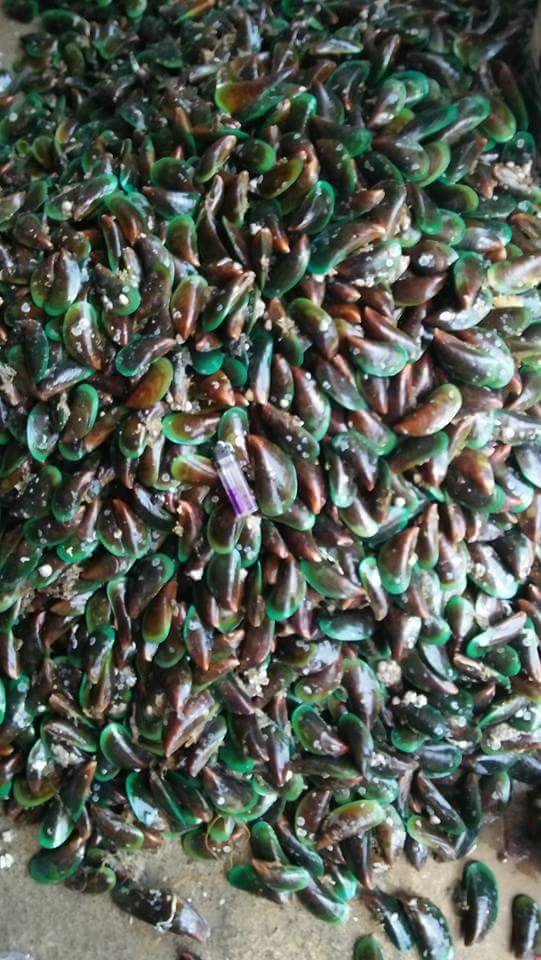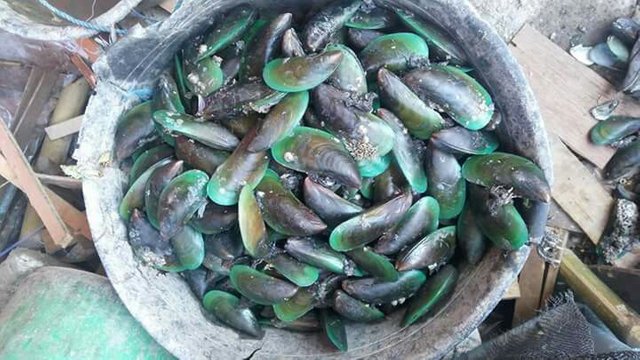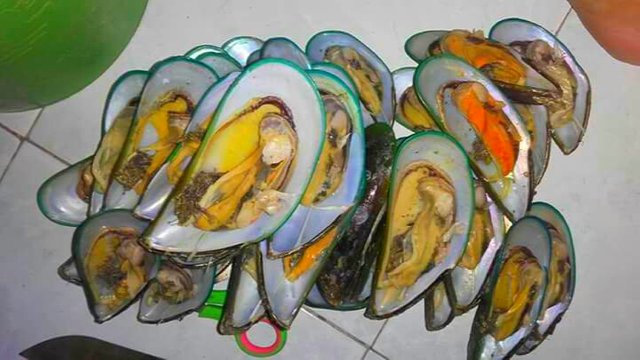Perna viridis otherwise known as green mussels
Perna viridis otherwise known as green mussels
I try to study more deeply about the type of green shell or shell ax in the language of Aceh called Sikupang. from the following sources. thank you for reading this may be useful to me as a refrentive gatherer and useful to all Steemian's in general.
Shellfish are aquatic animals belonging to the soft (mollusk) body that are common and biologically meaningless but widely used and used in economic activity. In the most widespread sense the shell means all molluscs with a pair of shells (Bivalves). With this understanding people are more apt to call it shellfish and commensurate with the meaning of shells used in many places. The use of chrome like this can be seen on the term "craft from shells". The word shellfish can also mean all living shells attached to objects. It includes edible food such as green mussels (Sikupang in Acehnese) but excludes edible species but lies in sand or underwater such as lokans and shells.
Bivalvia Classification
Classification of bivalves according to Linnaeus (1758):
Kingdom: Animalia
Phylum: Mollusca
Class: Bivalvia
Subclass: Heterodonta
Infraclass: Euheterodonta
Order: Veneroida
Superfamily: Cardioidea
Family: Cardiidae
Subfamily: Fraginae
Genus: Fragum
Species: Fragum unedo
Bivalve Morphology
The bivalve class includes clamshells of symmetrical bilateral sheltered by a hard lime shell. The shell consists of the dorsal and ventral parts of the dorsal portion:
Tooth joint as a shaft when the valve opens and closes and straightens both valves The joint ligament serves to unite the dorsal valve and separates the vertical valve.Umbo bulge the shell on the dorsal.
source
Seashell shells consist of three layers, namely the order from the outside into the following:
Periostrakum is a thin and dark layer composed of horn substances produced by the mantle's edge so often called the horn layer of its function to protect the inner layer and this layer is useful to protect the shell of carbonic acid in water and give the color of the shell.Prismatic middle layer which is thick and consists of prismatic calcium carbonate crystals derived from the organic material produced by the mantle's edge. Nakreas is the deepest layer composed of fine crystals of calcium carbonate is a layer of pearl produced by the entire surface of the mantle. In this layer there is more organic matter than in the prismatic layer. This layer looks shimmering and found in many oysters / pearls when exposed to light can emit a variety of colors. This layer is often referred to as the pearl layer (Biologipedia. 2010).source
Bivalvia Ecology
Bivalve life is often present in waters on the surface of sand or mud substrate. Bivalves usually live by immersing themselves in sand, mud or subtratic surfaces. But some live by sticking to the surface of hard objects. Infauna infants often give a striking reaction to the size grains or texture of the seabed so that the bivalve habitat of various slopes of mud sand will be different (#Odum 1994). source
Green Shell Pictures (Green Mussel)
Scallop (Scallop)
Phylum: Molluska
Class: Bivalves
Family: Pinnidae
Genus: Pinna sp
Species: Pinna sp
In Indonesia usually axle shells are sold without shells in the form of fresh or frozen. The flesh is white and thickly sheltered in a semicircular hard shell that resembles the eyes of ax.source
photo document @curiesea




Wow yes your exposure and your reference is perfect. thank you @curiesea for installing the Aquaculture tags
Pengalaman dan photography yang indah @curiesea rasanya pun bikin ketagihan luar biasa
Salam dari @itikna09